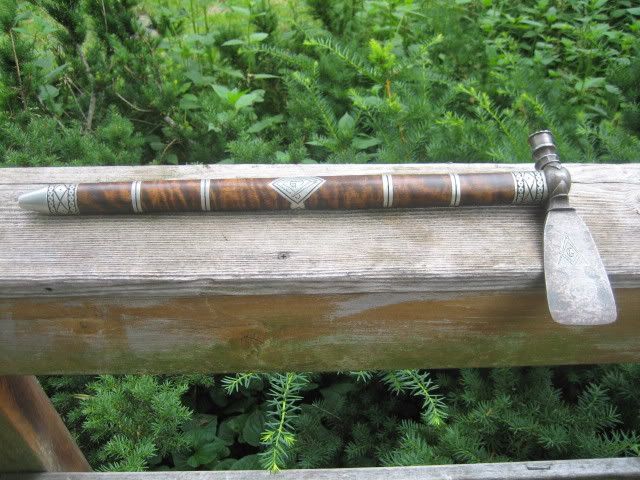matt denison
54 Cal.
- Joined
- Aug 15, 2004
- Messages
- 1,786
- Reaction score
- 14
I've got a question for the experienced pewter pourers among this group of gifted craftsmen.
I've been experimenting with pouring pewter bands and have tried several methods with little success. I've been wrapping various materials around round objects that I have reliefed about 1/4", made a sprue hole, tried improvised funnels etc. to get the pewter to pour INTO the band. It always seems clumsy, doesn't fill out well or don't get complete pour. I'm thinking there might be a trick that I'm missing.
I've done quite a bit of pewter pouring on bigger projects (nose caps and bolsters on knives etc.) so I know the basics. Does anybody have a technique or pouring bands like on 'hawk handles that they'd like to share?
Thanks,
Matt
I've been experimenting with pouring pewter bands and have tried several methods with little success. I've been wrapping various materials around round objects that I have reliefed about 1/4", made a sprue hole, tried improvised funnels etc. to get the pewter to pour INTO the band. It always seems clumsy, doesn't fill out well or don't get complete pour. I'm thinking there might be a trick that I'm missing.
I've done quite a bit of pewter pouring on bigger projects (nose caps and bolsters on knives etc.) so I know the basics. Does anybody have a technique or pouring bands like on 'hawk handles that they'd like to share?
Thanks,
Matt





